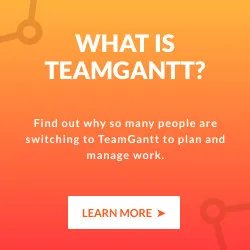Kanban vs. Scrum: What’s the Difference?
.webp)
.webp)



Kanban and Scrum are both popular Agile methods that deliver incremental work with a focus on continuous improvement.
While Kanban and Scrum each have advantages and disadvantages, neither method is a guaranteed fit for every project. Kanban can be overwhelming to implement, and some teams may fail to adapt to the unique demands of the Scrum framework.
So how do you decide which approach is right for your projects?
In this article, we’ll walk you through the differences between Kanban and Scrum and show you how implementing each project management methodology into your team’s workflow might look.
What is Kanban? Definition and origin
Kanban is a visual framework used in agile project management and lean manufacturing to continuously improve workflow. Some companies also leverage it to monitor their sales pipeline and turn leads into sales.
While teams in many industries use Kanban today, it originated as a visual way to manage inventory and streamline complex production systems used to manufacture physical goods.
Kanban—Japanese for “signboard” or “billboard”—was originally developed by Taiichi Ohno, an industrial engineer at Toyota who was interested in improving manufacturing efficiency.
In the 1940s, Toyota studied supermarkets and noticed they only stock as much product as they expect customers to purchase. When one item is pulled off the shelf, then another is pulled from inventory to replace it.
Ohno applied this just-in-time approach—along with a visual card system—to Toyota’s production process, and Kanban was born.
How the Kanban system works
Kanban uses a visual board divided into columns that represent different stages of the process. A card is created for each task that needs to be worked on, and teams move cards across the columns as each task progresses from stage to the next. Some teams use a physical board with sticky notes, while others keep it all digital.
The simplest Kanban board setup involves 3 columns: To Do, In Progress, and Done.

You might also throw In Review and Blocked columns into the mix—or expand columns even further—so it’s easy to see where bottlenecks are happening. Here’s an example of a board that’s been customized to each step in the editorial process for a blog calendar:

Remember, Kanban is all about managing how work flows and elastically adapting to demands. Setting Work In Progress (WIP) limits for each phase on the board helps ensure cards don’t pile up in a single column and clog up the process.
Some teams may get caught up in marketing or software development, while others get stuck in stakeholder review. In either case, resolving bottlenecks is key to improving efficiency in Kanban.
Kanban uses lead time and cycle time as common metrics of success. Lead time is the total amount of time it takes to deliver a task after it lands in your backlog, while cycle time measures the actual time spent working on a task once it’s in progress.
Kanban roles
In Kanban, there are no dedicated roles. Just as inventory may fluctuate with demand, priorities can shift during a project. This enables people to switch focus as items are completed or changes pop up.
However, some Kanban teams may include the following optional roles:
- Service Delivery Manager (SDM): This person directs meetings and oversees the flow of work on the Kanban board to make sure everything runs smoothly.
- Service Request Manager (SRM): This person handles project onboarding and prioritization with a focus on customer satisfaction.
Pros and cons of the Kanban process
Kanban isn’t a perfect fit for all situations, but it can be a useful tool for improving your workflow and efficiency. In the next couple of sections, we’ll weigh the pros and cons of Kanban.
Kanban benefits
- Integrates well with other Agile and Lean principles like Scrum
- Provides clear visibility into project components and team workloads
- Flexible workflows enable teams to respond quickly to change
- Makes it easy to spot bottlenecks in the process
Kanban disadvantages
- Overly complex Kanbans can be self-defeating
- Lack of deadlines can result in longer delivery times
What is Scrum? Definition and origin
Scrum is a whole process development approach where the team uses sprints to complete smaller chunks of a larger project. This Agile framework is primarily used by software developers to ship complex projects.
Scrum—which takes its name from rugby football—was originally developed to manage commercial product development. Hirotaka Takeuchi and Ikujiro Nonaka introduced the idea of Scrum in their 1986 Harvard Business Review article, “The New New Product Development Game.”
How the Scrum methodology works
Scrum focuses on speed, and sprints are used to accomplish tasks rapidly and efficiently.
Sprints are fixed increments of time when Scrum teams attempt to finish a project with the highest level of quality. They may last anywhere from a week to an entire month.
Here’s a quick look at key ceremonies that make up a Scrum sprint:
- Sprints start with sprint planning. In this event, the Scrum team picks a goal and sets priorities based on previously identified needs.
- Daily Scrum meetings happen throughout the sprint to inspect progress toward the goal. This 15-minute morning meeting is designed to be so fast no one has a chance even to sit. Meeting time limits should be strictly enforced and discussion avoided.
- Once a sprint wraps, a sprint review is done to gather feedback from stakeholders.
- Finally, a sprint retrospective is conducted to identify lessons and improvements.
Scrum uses story points to estimate work during sprint planning. Story points are a great way to measure how much work a team can ship in a given sprint. The more points a team completes, the higher the velocity—a key metric for success in Scrum.
Unlike Kanban—a fluid framework that continuously adapts—Scrum takes a more reactive approach to change. If changes pop up in the middle of a sprint, they’re often put off to the next one to avoid disrupting momentum and/or reviewed as part of the sprint retrospective.
Scrum roles
Three key roles are required to make Scrum work:
- Scrum Master: The Scrum Master plays the central role in sprint planning. Rather than acting as a team lead or a project manager, they work to eliminate roadblocks and other impediments that prevent the team from meeting deliverables. The Scrum master also coaches the team on how Scrum works.
- Product Owner: The Product Owner is the primary stakeholder of the project. The person in this Scrum role usually has the clearest understanding of a product’s competitors, marketplace, and users.
- Development Team: The Development Team includes all the people working together in a cross-functional structure to build the product at hand.
Pros and cons of the Scrum framework
Like Kanban, the Scrum framework is an excellent tool for getting work done, but it might not work in all cases. Let’s look at the benefits and limits of using Scrum for your projects.
Scrum benefits
- Timeboxed sprints lead to faster project delivery
- Frequent feedback cycles produce higher quality and client satisfaction
- Regular meetings keep teams in sync from planning to release
- Its structured process breaks complex projects into smaller, manageable chunks
Scrum disadvantages
- Can take time to integrate into a team/workflow
- Not as useful for daily/rote tasks or open-ended projects with no deadline
- Changes that pop up must wait until a future sprint
Quick comparison: Scrum vs. Kanban cheat sheet
The chart below provides a quick recap of the main differences between Scrum and Kanban. Use this cheat sheet to guide your team toward the framework that’s right for you.
When to use Kanban vs. Scrum for your projects
When deciding whether to adopt Kanban or Scrum, you first need to determine your project demands.
Time-sensitive tasks lend themselves well to Scrum.
For example, consider how Scrum utilizes sprints. Scrum is well-suited to app development, where you may have various teams working together to deliver a working model to a client. This could include UI and UX work and backend coding.
At the end of the month-long sprint, the project is delivered to a client for review. The team takes the client’s feedback into sprint planning and makes adjustments to the software in the next sprint.
Open-ended projects that need flexible workflows may be better suited to Kanban.
For instance, a new website can require a lot of pieces to come together, from graphics to written copy for a page. Often, you may be waiting on a client or other department to deliver assets to keep the project moving forward.
In this case, Kanban might be a better option for your team because you can see which pieces are holding up overall project completion and work to resolve bottlenecks quickly.
Scrumban: Combining the best of Scrum vs. Kanban
Sometimes, Scrum and Kanban get combined into what is called Scrumban. This hybrid method uses Scrum processes and the visualization tools of Kanban. Just because you’re using Scrum doesn’t mean you can’t also use Kanban. Incorporating both frameworks into your project management can yield even better results than using a single approach alone.
What is Scrumban?
Scrumban is a hybrid approach that combines Kanban’s visual aids with the structured processes of Scrum to guide tasks to completion using a more intuitive workflow.
When to use Scrumban
Scrumban is a great tool to use when your teams are already familiar with Kanban and Scrum but have reached peak levels of efficiency with each.
Some common use cases for Scrumban include:
- Maintenance projects: Customer support never ends, but sprints can be a great way to eliminate backlogs. Ticket pulls determine what needs to be done and who has the support request assigned to them. Once completed, items are moved into the “done” category.
- New product development: No matter what project you use it for, Scrumban is a great way to develop new product offerings. Let’s say you’re working on a new spring clothing line. You can use Scrumban to assign tasks based on department. Sprints could drive the development period leading up to the season launch, while backlog limits ensure teams don’t become overwhelmed.
- Managing resource allocation: Teams rarely work on a single project at a time. More often, they’re tasked with juggling multiple projects and interests. For example, if an accounting team is handling cash flow projections and payroll at the same time, Scrumban can help keep them organized.
Using boards to manage your workflow in TeamGantt
TeamGantt offers one of the most robust toolkits for managing projects and workflows, with a flexible board feature that centers around your project plan.
Think of TeamGantt boards like an engine for your project. When you build out a project in Gantt view, all the tasks are available as cards in your project board’s inbox. Simply set up the columns, pull cards onto your board, and you’re ready to go.
You can also build custom boards that allow you to manage teams and tasks across multiple projects in a single workflow. Watch the video below to see how boards work in TeamGantt:

TeamGantt boards allow you to streamline, automate, and customize everything. Teams can easily move tasks from one stage of the process to the next by dragging cards across columns. Any tasks you add to your board will automatically appear on your gantt chart.
The best part is you can view your work any way you like—whether you prefer a board view, gantt chart, task list, or calendar. It’s all there and available online.
TeamGantt integrates seamlessly with Trello to allow you to sync your Trello data with project gantt charts, and a Jira integration is also in the works.
Like Scrumban, TeamGantt gives your team the flexibility to adapt to your team’s needs and workflows. Best of all, you can get started for free!
Sign up for a free 30-day trial to see how TeamGantt can improve your team’s efficiency today.